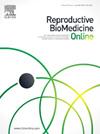Sociodemographic profile of women seeking elective egg freezing when financed by the public healthcare system
IF 3.7
2区 医学
Q1 OBSTETRICS & GYNECOLOGY
引用次数: 0
Abstract
Research question
What is the sociodemographic profile of women requesting elective egg freezing (EEF) in France, in the context of full health insurance coverage for this procedure since 2021?
Design
A cross-sectional prospective survey study was conducted from November 2022 to April 2024, exploring sociodemographic profile, motivations, communication about the procedure in France, intentions to request sperm donation, and attitudes in the case of non-use of stored oocytes. Hierarchical cluster analysis was used to identify subgroups of women based on their answers.
Results
Women requesting EEF had a median age of 35.35 (IQR 33.85–36.08) years, were single (72.2%), and resided in urban areas (92.2%). The majority belonged to a high socioprofessional category (68.3%). Nearly two-thirds (64.4%) of these women stated that they would not have considered EEF if it had not been covered by the national healthcare system. The main reason for applying for EEF was the absence of a suitable partner (64%). Regarding future parenting plans, 8.9% of women had registered for sperm donation in addition to EEF. In the case of non-use of their stored oocytes, more than half of the women (58%) would consider donating them (48% to a couple exclusively, 10% to research or a couple). A significant proportion of women (26.1%) were in a heterosexual relationship at the time of EEF.
Conclusion
To the authors’ knowledge, this is the first study to show that full insurance coverage of EEF has little impact on the sociodemographic profile of women requesting it in France compared with similar data published in studies from countries in which patients bear the cost of EEF.
求助全文
约1分钟内获得全文
求助全文
来源期刊

Reproductive biomedicine online
医学-妇产科学
CiteScore
7.20
自引率
7.50%
发文量
391
审稿时长
50 days
期刊介绍:
Reproductive BioMedicine Online covers the formation, growth and differentiation of the human embryo. It is intended to bring to public attention new research on biological and clinical research on human reproduction and the human embryo including relevant studies on animals. It is published by a group of scientists and clinicians working in these fields of study. Its audience comprises researchers, clinicians, practitioners, academics and patients.
Context:
The period of human embryonic growth covered is between the formation of the primordial germ cells in the fetus until mid-pregnancy. High quality research on lower animals is included if it helps to clarify the human situation. Studies progressing to birth and later are published if they have a direct bearing on events in the earlier stages of pregnancy.
 求助内容:
求助内容: 应助结果提醒方式:
应助结果提醒方式:


